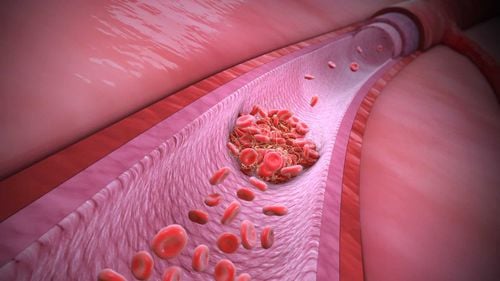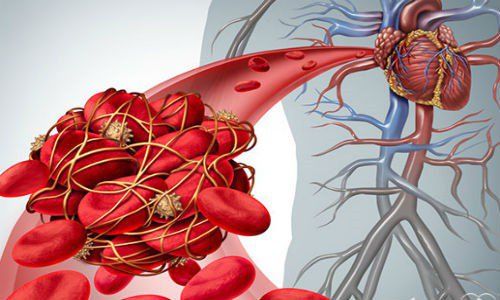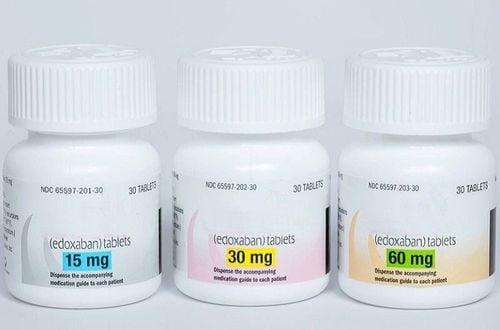This is an automatically translated article.
The article is professionally consulted by Master, Doctor Pham Van Hung - Department of Medical Examination & Internal Medicine, Vinmec Danang International General Hospital.Deep vein thrombosis is one of the most common cardiovascular diseases. This disease is often silent, many patients do not know they have the disease. The choice of treatment regimen for deep vein thrombosis must be made by specialists after conducting a full examination.
1. Who is at risk for deep vein thrombosis?
Deep vein thrombosis is a blood clot located in the deep veins of the body. This condition most commonly occurs in the pelvis, thighs, and lower legs, but can also affect the hands, chest, or other locations.People with one or more of the following risk factors are more likely to develop DVT:
Older age, over 70 years old. Have cancer that is active or being treated within the last 6 months Has an injury or surgery to the pelvis or lower extremities Patients undergoing surgery requiring anesthesia lasting more than 5 hours Patients receiving Estrogen therapy /Progesterone Women in the postpartum state Those with congenital or acquired hypercoagulability Patients bedridden for more than 3 days or have had surgery within the previous 4 weeks Most cases of venous thrombosis Deep decay often occurs in patients undergoing surgery, illness, inpatient treatment. The risk of deep vein thrombosis is increased in the following people:
Obese People with a history of heart attack People who have had a stroke People with congestive heart failure Pregnant women, nursing mothers People using drugs Contraception Patient has ulcerative colitis.
2. Deep vein thrombosis treatment protocol
Deep vein thrombosis can be treated with medications and minimally invasive procedures, but sometimes surgery is still needed.2.1. Anticoagulation Treatment Most patients with DVT will require hospitalization, but due to the convenience of low-molecular-weight heparin, some patients can be treated at home with care of medical staff. To treat at home, the patient needs to meet the following requirements
Small thrombosis Few symptoms Able to walk and be active Will have to wear an elastic band first and then after edema will wear socks/stockings force Able to self-inject No other illnesses, no dyspnea and no suspected pulmonary embolism Follows medical orders well. Adequate anticoagulation is the mainstay of treatment in DVT. Initiate treatment with Heparin, then switch to Coumarin derivatives to prevent relapse. Anticoagulants thin the blood, making it difficult for the blood to clot.
Heparin helps prevent blood clots and prevents existing blood clots from developing further. These drugs cannot dissolve blood clots that have formed. Heparin is rapidly acting but must be administered intravenously. The drug is used for the first 5-7 days. Coumarin-derivative anticoagulant (Warfarin): After using Heparin injection, the patient will be switched to a Coumarin-derivative tablet anticoagulant for 6 months. During treatment, patients need to have regular blood clotting tests. To ensure that the drug concentration is just enough to prevent thrombosis, but not to cause bleeding. Because anticoagulants can cause bleeding if taken in excess.
2.2. Thrombolytic therapy Thrombolysis (fibrinolysis) therapy is the ideal treatment to dissolve clots that have formed and maintain venous valve function. Thrombolysis treatment works like this: the vascular surgeon will use a catheter to deliver the thrombolytic drug directly to the site of the clot.
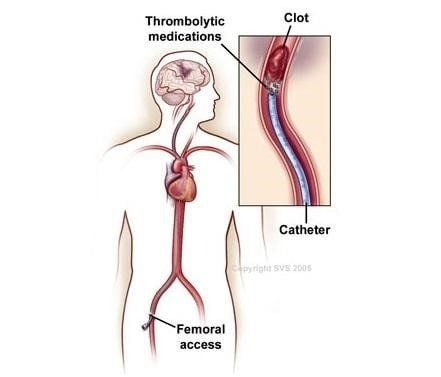
Complete thrombosis in 45% of patients on thrombolysis fibrin. Thrombosis completely resolved in 4% of patients on standard anticoagulation. Thus, thrombolytic therapy has a better effect on dissolving the formed blood clot than anticoagulant treatment with Heparin. Even thrombolytic drugs can dissolve very large blood clots. However, it has a higher risk of bleeding complications and stroke. Therefore, thrombolytics are chosen for use when:
The patient is at high risk for pulmonary embolism. Or the patient has a deep vein thrombosis in the arm. 2.3. Surgical treatment The surgical methods of thrombectomy, placing a vena cava filter are often used when patients cannot use anticoagulants or have tried anticoagulation but failed.
Thrombophlebectomy: usually used when patients have deep vein thrombosis, unresponsive to medical treatments (drug therapy). These patients, if not treated properly, can lead to necrosis, because the tissues are not supplied with enough blood and oxygen. Complications of gangrene are very serious because it can lead to amputation. Surgical method of placing a vena cava filter: This method uses a special metal filter to protect against pulmonary embolism in patients who cannot take anticoagulants. The vena cava is a large vein in the abdomen that carries blood back to the heart and lungs. The vena cava filter will prevent thrombi from the veins of the lower extremities from traveling to the lungs.
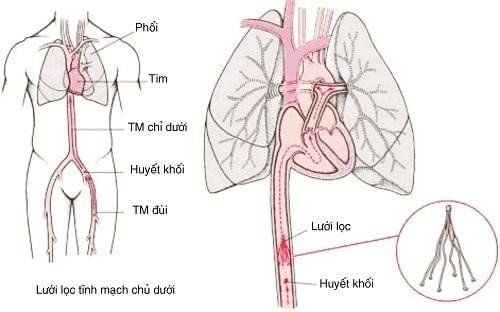
Femoral vein Cervical vein Brachial vein. The choice of treatment regimen for deep vein thrombosis must be made by specialists after conducting a full examination. Patients must absolutely not increase or decrease the dose of the drug on their own or stop taking it suddenly without a doctor's prescription.
Please dial HOTLINE for more information or register for an appointment HERE. Download MyVinmec app to make appointments faster and to manage your bookings easily.






